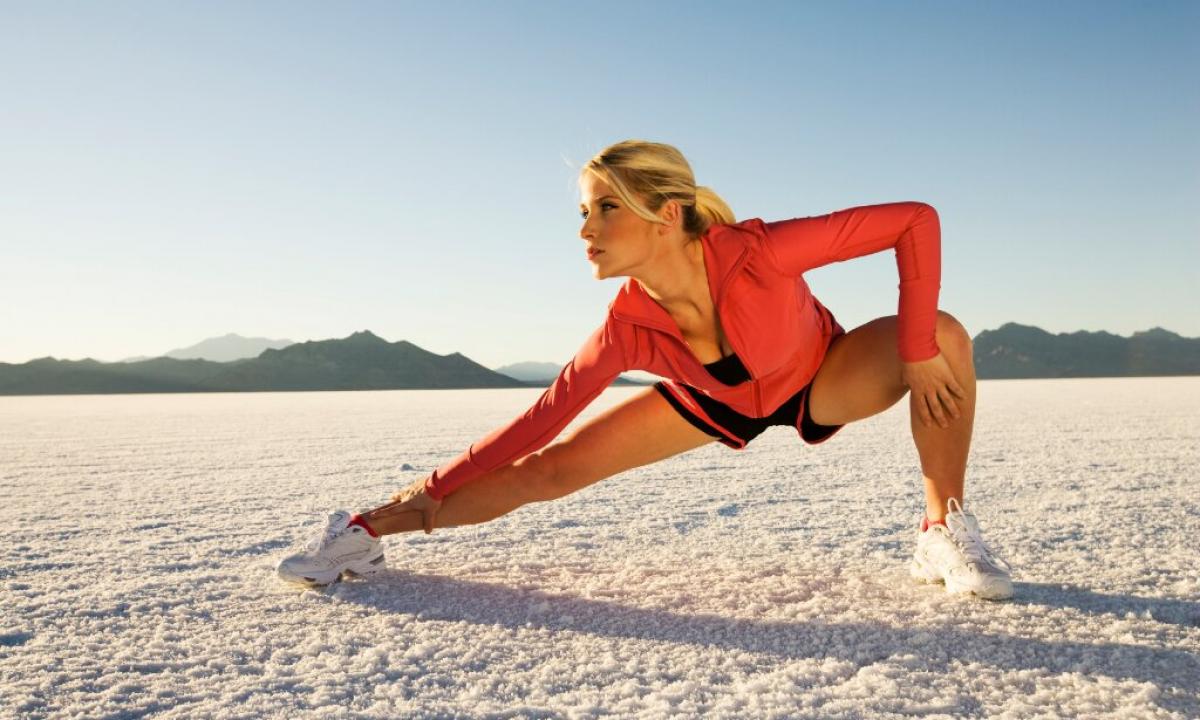In gymnastics the twine is considered one of basic elements which development is considered sign of skill at athletes and dancers. In the present article we will consider main types and also its variations. Also you learn whether to people this acrobatic exercise is available to all to performance.
Half-split and twine
Before starting the description of types, we will explain what gymnastic figure is called a twine.
Whether you know? The gymnastics as sport, arose in Ancient Greece at the time of the antique Olympic Games. Then it included boxing, run, fight and riding besides classical exercises.
Such signs are inherent in it:
- legs have to be taken away in the opposite directions and form the uniform line;
- the corner between the internal surfaces of hips has to be from 180 °;
- the basin is a little turned out forward;
- the line which is conditionally tying left and right coxofemoral joints has to pass perpendicular to the line of a twine (in longitudinal option) or to be parallel (in cross option).
The half-split is one of preparatory exercises for an extension. One of legs is bent in a knee joint, and the second is extended as for full according to the above rules.
It is interesting to learn what there are and as it is correct to do push-ups, squats, pullings up.
Longitudinal and cross
The described gymnastic elements are subdivided into two basic views: longitudinal and cross.
When performing a longitudinal twine the lower extremities get divorced concerning the case forward and back. In turn, in such element it is possible to allocate two subspecies: left-side and right-hand, proceeding from what leg is located ahead.
At cross the legs are divorced on both sides from a trunk. Longitudinal, generally, is easier in development. But it is more difficult for men performed by, than cross, in view of badly giving in to development of a back surface of a hip.
Important! Statistically, the cross split is inaccessible approximately for 13% of the population of the planet because of features of the structure of a coxofemoral joint.
Possible variations
Besides two basic types allocate 7 variations of this gymnastic element.
Classical
The classical twine is the gymnastic element which is carried out by the rules given above and at which the corner between legs is equal 180 °. It is carried out on a floor.
Negative (provisny)
For provisny, or negative, option of this gymnastic element very good extension is required, the corner between legs has to be more than 180 °. It is considered very difficult and sometimes it is called royal. For its performance the additional stock which can be used as a support, for example, chairs is necessary.
Whether you know? Such twine was shown by Jean-Claude Van Damme in the well-known commercial of the Volvo cars.
Horizontal
The horizontal subspecies are a peculiar modification cross. For its performance it is necessary to sit down in a cross type of this gymnastic element, and to extend a trunk before contact with a support (floor) forward. Hands can be parted in the parties or to extend before itself.
Vertical
Vertical is the option of a twine which is carried out from an initial position standing. As a support serves one of legs. Also as an auxiliary support it is possible to use a wall or a pole. The cross vertical variation is carried out with support by hands.
On hands
These subspecies belong to professional and difficult gymnastic elements. For its execution it becomes necessary to have ability in a handstand and to have good balance. After placing in a rack part legs in a twine.
Air
Air is carried out in the movement. It can be executed both from running start, and from the place. In a jump the move is made by a leg at the expense of what the necessary corner is reached.
Important! Quite often meets that the person is capable to make such twine, and cannot sit down in classical.
Lying on a floor
It is a kind of this gymnastic element when which performing the trunk adjoins to a basic surface. For a start it is necessary to accept a starting position — to lay down on a back. Then the lower extremities get divorced in the parties — the cross option turns out. Other option: one of legs is extended on a floor, and the second is attracted to the head and adheres hands (longitudinal).
So, we considered what is a twine and what its versions allocate. It is important to remember that before trying to sit down in any of versions, it is necessary to develop long time of a muscle and sheaves to have a good extension, otherwise it can be injury-causing.

